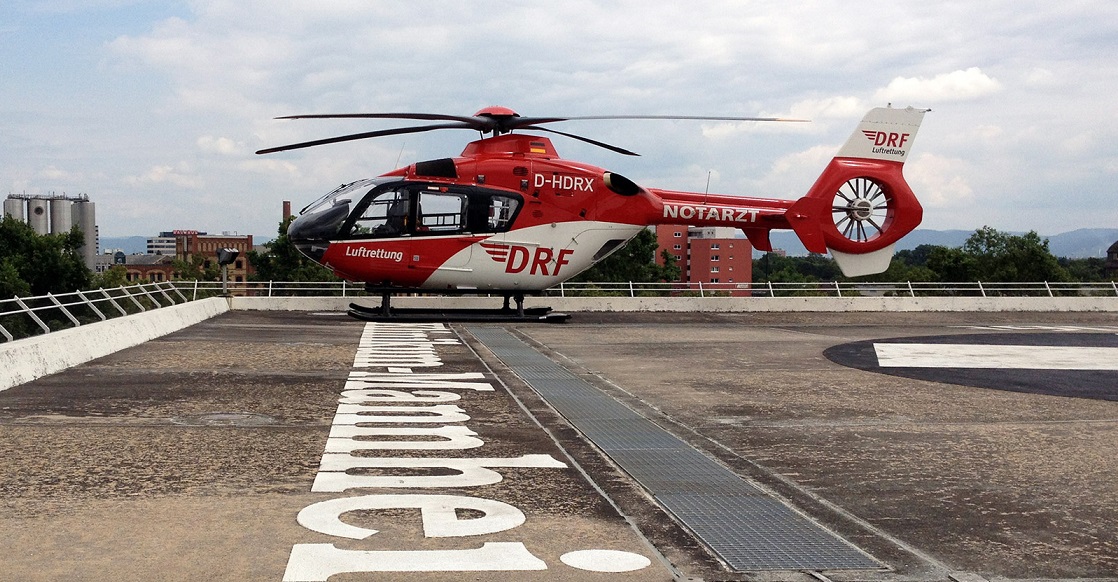Penetrating injuries of the thorax or upper abdomen, the so-called “cardiac box,” are an acute vital threat due to hemorrhage and pericardial tamponade. Therefore, on-site measures to secure vital signs are necessary. DRF Luftrettung has trained its entire medical team at the Mannheim, Germany, base at Heidelberg University Hospital in the application of advanced invasive emergency techniques; all emergency physicians and emergency paramedics (HEMS-TC) are able to apply the advanced invasive emergency techniques onsite. Further training at DRF Luftrettung’s bases in this area is planned.

The use of invasive emergency techniques directly on site stabilizes pericardial tamponade before transport to the clinic and continues to help control fulminant bleeding. This helps to save lives. Together with partners such as Heidelberg University Hospital, DRF Luftrettung is therefore constantly working to establish state-of-the-art emergency response technology to save lives.
In addition to the INTECH seminars at the University of Heidelberg, which deal with chest drainage, cricothyrotomy and intraosseous access, participants of the INTECH seminar receive training in clamshell thoracotomy, pericardial puncture and REBOA (Resuscitative Endovascular Balloon Occlusion of the Aorta) Technique for stopping internal bleeding after accidents.
These techniques are relevant for injuries associated with high blood loss or pericardial tamponade. In addition to penetrating injuries in the thorax, severe bleeding in the abdomen or pelvic area can also be addressed. All emergency physicians and HEMS-TC of DRF Luftrettung’s Mannheim base have completed this seminar successfully. Thus, the crew of “Christoph 53,” an Airbus EC135, always ensures that such severely injured patients receive maximum optimal preclinical care.
“With the training of the Mannheim team, the DRF Luftrettung is taking an important step in the patient’s interest,” Dr. Marcus Rudolph, emergency physician and head of the medical continuing education and training of DRF Luftrettung. “Together with our partner, the Heidelberg University Hospital, we can increase the survival rates of patients with such injuries through advanced invasive emergency techniques.”
Together with its partners, DRF Luftrettung is constantly working to develop and establish new technologies that save lives. Since June, the DRF Luftrettung Academy has been offering a course in advanced invasive emergency techniques. There is also a cooperation in this area with the University Hospital in Hamburg-Eppendorf, department of forensic medicine. The expertise of the crews at DRF Luftrettung’s bases is to be supplemented step-by-step throughout Germany and the staff trained in the width.
“As a pioneer in this area, it is important to us that not only the people in the Mannheim region benefit from our knowledge and skills. In the medium and long term, our competences should benefit all patients in Germany,” said Dr. Jörg Braun, head of medicine at DRF Luftrettung.









